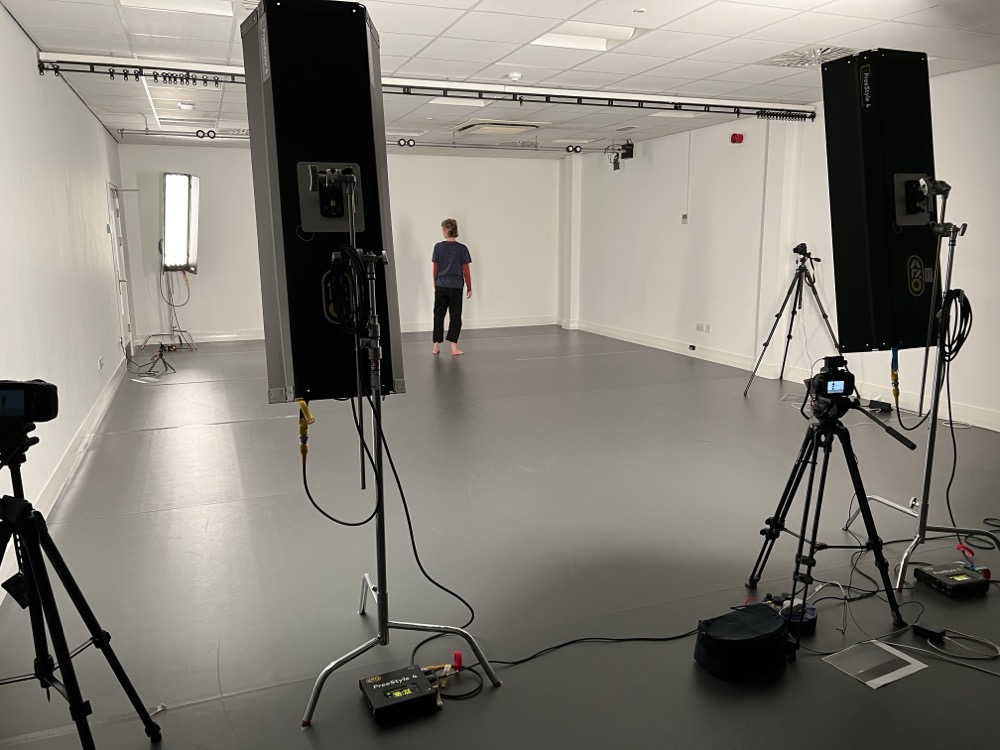I’ve written and presented in another context about documenting complex, rich, high fidelity human experiences with low fidelity (or resolution) forms of documentation. When we point any kind of camera at a human being improvising there is vast difference between the internal experience of the improviser and what is visible.
In Losing Oneself Katye Coe and I are doing a version of authentic movement for four cameras which more or less cover the space. Three cameras are shooting time-lapses (every 3, 4 and 7 seconds respectively) and one camera is a locked off 4K video camera. The stills are RAW files so each photograph is about 25MB, and each improvisation produces hundreds of these per camera. After 9 studio days we have nearly 3TB of data. These data are unquestionably high resolution but still they capture nothing of the complex, rich and wide open experiences that Katye and I are having.
So why bother?
The truth is I don’t know. I think I might make a film out of the timelapses/stills but I don’t for a second imagine that film will somehow register anything of what is going on in the studio.

Katye Coe, 4 cameras and a lot of light.